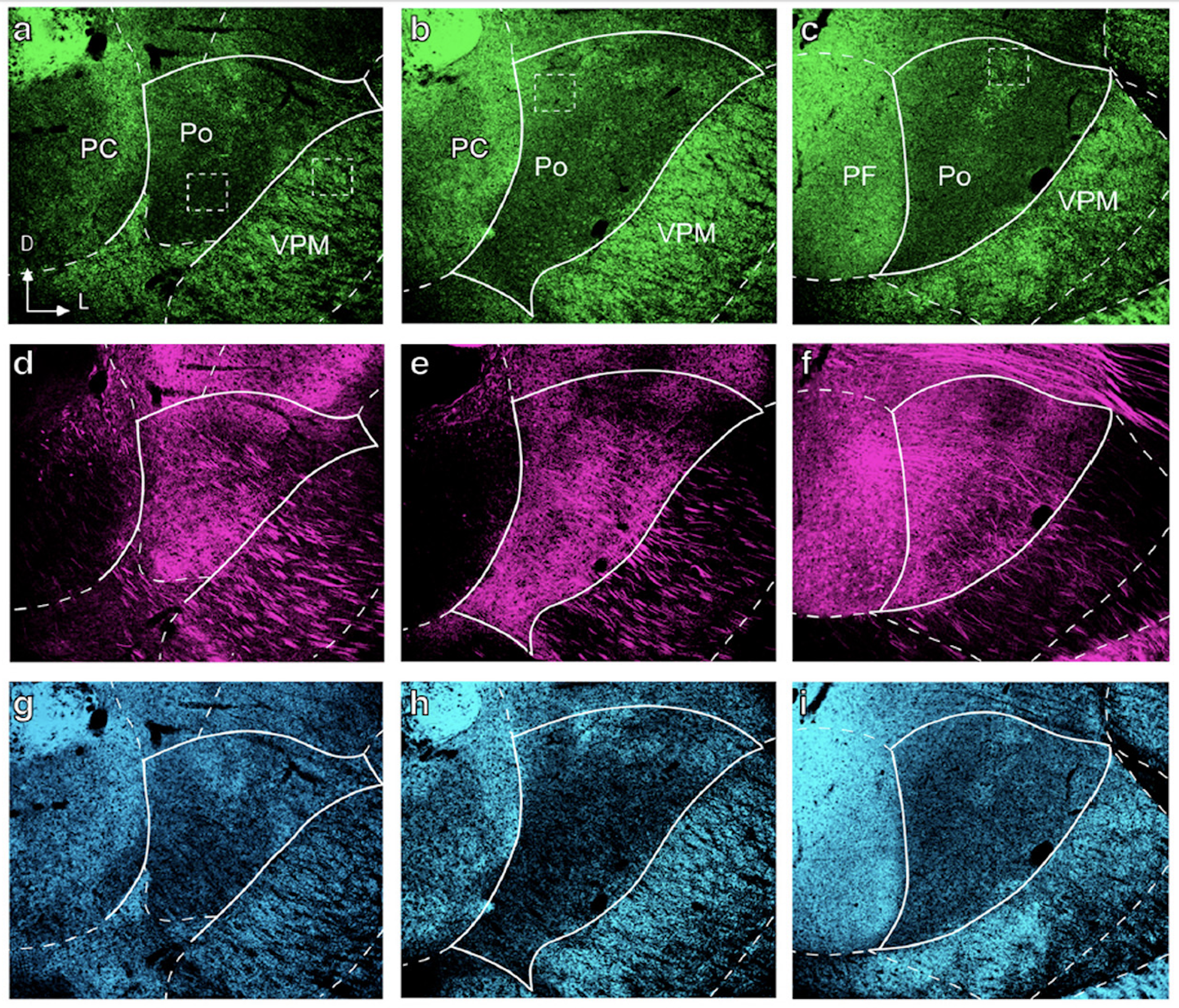- Research News
HBP researchers map the 'synaptic landscape' of a cognitive nucleus of the thalamus
29 November 2022
Researchers from the Autonomous University of Madrid (UAM) supported by the Human Brain Project (HBP) were able for the first time to identify the origin, intranuclear distribution and size of all types of axon terminals present in a cognitive nucleus of the thalamus.
The results, published in The Journal of Neuroscience, may help to clarify the mechanisms of important brain functions, as well as to develop advanced computational models of the brain’s “neural wiring”.
The thalamus is a structure located deep in the brain. It acts as a central node in the multiregional neural networks that support perception, cognition, voluntary movement, and memory.
Although it is often described as a relay station for signals to the cerebral cortex, only a few nuclei in the human thalamus are actually dedicated to simple relaying.
Most of these nuclei integrate signals that converge from different points in the cerebral cortex, as well as excitatory and/or inhibitory subcortical signals, and send the result back to the cortex. The logic of this convergence and its impact on cortical function are still poorly understood. Now the recent findings of the HBP researchers provide new insights into this brain structure.

A heterogeneous mosaic
“We have found that, unlike the homogeneous pattern of the simple retransmission nuclei, the pattern of the cognitive nuclei is highly heterogeneous, like a mosaic,” the authors explain.
"This finding implies that neuronal subpopulations of the same nucleus can receive different combinations of signals and thus produce different computations, creating multiple functionally different parallel circuits," they add.
These results significantly advance our understanding of the basic principles of the 'neural wiring' of the brain. Knowing these principles is the basis for clarifying the physiology and pathophysiology of perception, cognition, voluntary movement, and memory, as well as for developing advanced computational models of these circuits.
The researchers worked in mouse models with immunolabeling techniques to remotely trace neuronal connections and measure axons originating from specific neuronal groups, from the cerebral cortex to the spinal cord.
The work is authored by Diana Casas, Mario Rubio, Lucia Prensa, César Porrero and Francisco Clascá, from the Department of Anatomy, Histology and Neuroscience of the Faculty of Medicine at the UAM, in collaboration with researchers from the Department of Anatomy, Physiology and Genetics of the University of Oxford.
The studies were carried out over five years, with funding from the European Commission (Human Brain Project - Horizon 2020 Program) and the Ministry of Science and Innovation of Spain.
Original text in Spanish
Reference:
Casas-Torremocha D, Rubio-Teves M, Hoerder-Suabedissen A, Hayashi S, Prensa L, Molnár Z, Porrero C, Clascá F. 2022. A combinatorial input landscape in the "higher-order relay" posterior thalamic nucleus. Journal of Neuroscience 42 (41) 7757-7781.



